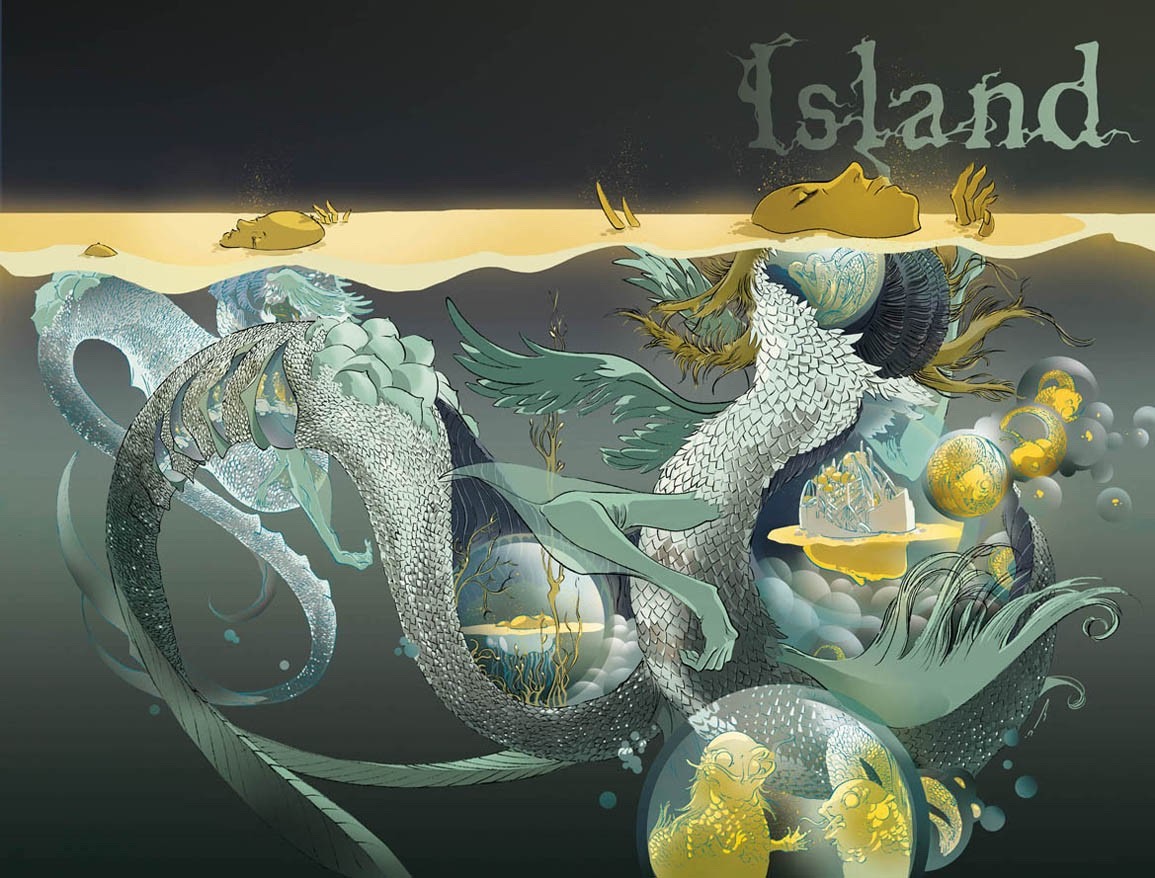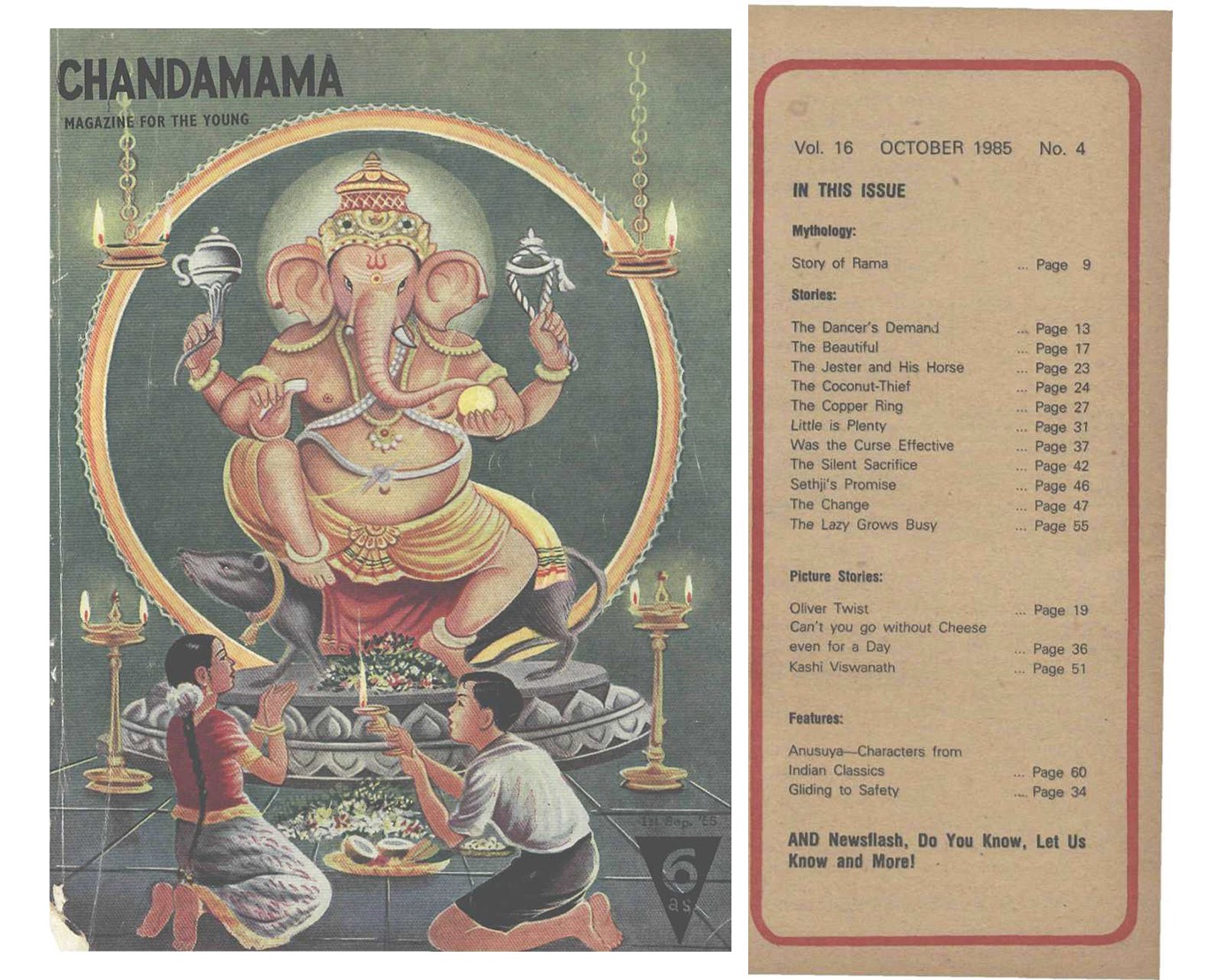§ Nice Art: Elvis by Tony Millionaire
§ A cat that looks like Adam Driver was discovered at a cat adoption site, and it found a home, and the internet survived. It was a very, very close call, though.
§ Comic-Con has announced second guest wave!
Jason Aaron • writer, Scalped, Star Wars, Thor
Kate Beaton • writer/artist, Step Aside, Pops; Hark! A Vagrant!
Paul Gulacy • artist, Master of Kung Fu, Six from Sirius, Catwoman
Patrick Rothfuss • author, The Name of the Wind, The Wise Man’s Fear
§ Sean Kleefeld covers a phenomenon I’ve been noticing for 20 years or so: people who read comic strips but say they don’t read “comics.” Of course now that there are no newspaper outlets left that runs comic strips, it’s a bit easier to understand.
§ The Image website has a nice feature on the making of the covers for the Island anthology. That’s Emma Rios above.
§ Brady Dale discusses the problems with online voting and compares it to the new Prez collection.
§ Over at Comic Book Daily, Dylan Routledge is running a weekly series, which seems to go against the name of the site, but what the hey. The subject of his series is examining two works by various comics writers one a week, including Geoff Johns, Rick Remender and the rest of the gang.
§ Meanwhile, a fellow name of David Yoder is actually drawing a daily comics strip about watching a movie a day and 18 days in and he’s doing it!
Perhaps heroically, perhaps foolishly, David Yoder is heeding the call of funnyman Doug Benson. The cannabis-consuming host of the Doug Loves Movies podcast watched a movie a day in 2015, and now Yoder is attempting to do the same in 2016. Since this is a leap year, that means Yoder will actually be watching 366 movies as part of this mad quest. The twist, however, is that Yoder is also a cartoonist and will be documenting his cinematic adventures via some six-panel, black-and-white mini-comics on his Yoder’s Comics Tumblr. Naturally, David ushered in the project with an explanatory comic, complete with an ersatz cameo by Doug Benson.
§ Aftershock Comics is profiled in WaPo with the question Are we living in a comics Renaissance?
“To us, there seems no better time to start a new company,” Marts told The Post’s Comic Riffs. “More and more, we’re discovering that the comic book-reading audience is gravitating more towards specific creators and less to specific characters or properties. “The creator-owned comics initiative has never been stronger, and our feeling is that we have only experienced the tip of the proverbial iceberg.”
§ Claire Napier examines Moyocco Anno’s ‘Memoirs of Amorous Gentlemen’ which is being serialized at Crunchyroll.
If you want to look at naked people while stroking your beard (as well as other, lower parts), Moyoco Anno‘s period piece Memoirs of Amorous Gentlemen follows Colette — already, yes, a literary allusion — through her sex work, her dormitory life, and her efforts at achieve literary clarity and philosophical honesty.
(Note I’m name checked in this piece as I’m a big Anno fan.)
§ Over on a KPop site, a controversy arises when a girl pop singer threw shade at a cartoonist on some tv show:
Cartoonist Lee Mal Nyeon, who appeared on ‘My Little Television’s live internet broadcast with Girl’s Day’s Yura this past Sunday, was forced to address all the negative and hateful comments toward the idol subsequent the broadcast. The netizens had left comments that went, “I don’t understand why Yura prepared doing oil paintings when they take a long time to do,” and, “Yura’s critique on Lee Mal Nyeon’s painting went over the line,” raising their voices against the supposed attitude Yura displayed towards the cartoonist.
I don’t know what’s going on here, but it sounds way more interesting than someone sniping at Rob Liefeld or Dan Slott on twitter.
§ Subir Dey has a introduction to the history of Indian comics, which based on my vestigial knowledge of the subject, seems quite robust:
The history of Indian comics goes back roughly half a century or a little more than that. Arguably, that history begins with Chandmama, an early children’s magazine founded in 1947 that contained comics in a small section. As a children’s magazine, Chandmama was dedicated to educational stories, games, quizzes and other fun activities. It also included a small section called Picture Stories. The format of these picture stories differed in some ways from a conventional comic book, but they did include panels, images and text.
This is part of Dey’s larger research project, and he says he’ll be starting a supplemental website.
§ Charlie Hebdo got into trouble again with a cartoon which showed Aylan Kurdi, the three year old Syrian boy who drowned while seeking asylum. growing up to be one of the New Year’s Eve gropers from Cologne, Germany. While Hebdo often satirizes racism by showing extreme images, Kelly Kanayama explains how this approach just doesn’t work this time:
Many pro-Charlie Hebdo voices have mounted the irony defense: “They’re trying to say that this is what racists think! The real racists are the ones who don’t see that it’s ironic.” (I’m reminded of comedian Hari Kondabolu’s description of the word “racist” as “like the N-word for white people.”) Perhaps that is what the magazine intended, but why then did they not put these “racists” on trial rather than the legacy of a dead three-year-old boy? Why didn’t they depict the targets of their satire as misinformed buffoons?
Kanayama points out that this is not a call for censorship:
I am not advocating legal censorship here, partially because I’m not wholly sure where and on what basis to draw the line.
What I am calling for is an evaluation, whether artistic, academic, or otherwise, that respects the humanity of people of color. We are not merely subjects of debate; we are people, and our voices need to be heard.








